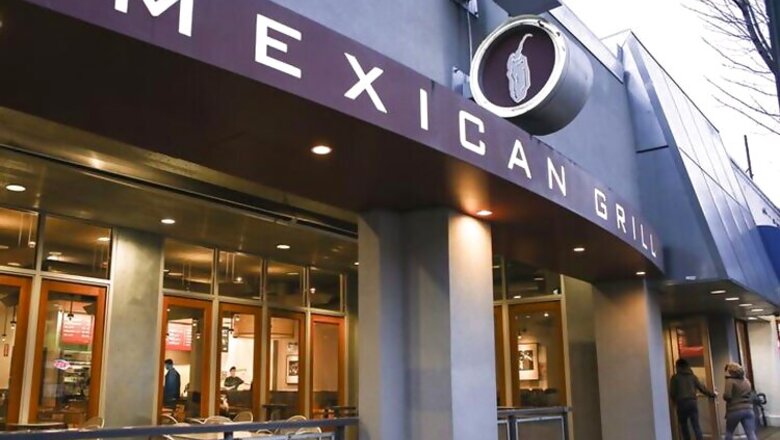
views
With online startup fever gripping plethora of entrepreneurs, it was natural that Online Food startups would have a sizable share of the pie. Food Startups have always been abundant in the offline world too. Food is not only the most basic need, it is also a source of entertainment and object of creativity for many, catching the fascination of professionals and housewives alike.
Who would not want the status and thrill of owning a restaurant, bar or a lounge?
But recent news in India about companies like Zomato, initially a Restaurants Search & Discovery Company and now going for Delivery, Reservations, POS; Tiny Owl, a Restaurants Food Delivery Aggregator; Local Banya, an Online Grocery Delivery Company, among others have shaken and stirred entrepreneurs and investors alike. These companies recently firing a significant number of employees seems prescient. And management blaming it on sales people not meeting targets sounds clearly like they are passing the buck and skirting responsibility. Local Banya seems to have shut shop despite raising decent funding and heavy advertising support from The Times Group (Big India Media House). These companies have clearly bitten more than they can chew and definitely more than what they can digest. It appears to be Management Strategy gone completely wrong in trying to do too much in a mad hurry. Nostalgia from Webvan, Pets.com, Kozmo era!
Maybe, the overall online Food Services market worldwide is getting very crowded. Lets analyse what is happening in this ultra-exciting, dynamic and confusing space, and why?
Online Food Startups can be categorized globally in five main spaces namely "Restaurants Search & Discovery", "Restaurants Food Delivery", "Restaurants Réservations", "Online Only Food Kitchens" and "Meal Kits or Ready to cook" besides "POS & Technology Services".
All these categories might look overlapping but can be very different in terms of execution and there is a good chance that they will be dominated by different companies in different geographies.
Looking at the US Market
If we take some parallels from the US in Online Food startup space in last 10 years there are 3 prominent listed players -Yelp, GrubHub(Seamless) and OpenTable (acquired by Priceline).
Yelp is in the "Search and Discovery" space for Restaurants, where Zomato started in India and has done a decent job. Other Restaurant Discovery apps worldwide are FourSquare, Eat24, Dish.fm, Nara, Zagat, HungryGoWhere, Urbanspoon, MangoPlate etc.
Zomato does not list its yearly revenues but they should be close to US$20-40M. Zomato raised US$60M in its last round taking its valuation to around US$1B market cap and total funding around US$225m. One of the early and major investors of Zomato has been Info Edge, the listed parent company of Naukri.com.
We can look at Yelp to see what a Search & Discovery Food Restaurant Business can be worth in a mature, large and high purchasing power economy like US. In last one year, Yelp share price reduced from US$60 to US$20 (at one point, but now it has bounced back to US$30) reducing its market cap from around US$4B to US$1.5B this year, just maintaining its Unicorn Status. This is despite Yelp having more than US$350m in revenues in the last financial year 2014. Investors are now realizing that transactions are more valuable than advertising revenue, especially with Google breathing down the Search & discovery Space.
GrubHub(Seamless) was the pioneer of Restaurants Food Delivery & Aggregation space in US. It has around US$2.3B market cap with 2014 revenues approximately US$250m. Similar revenue numbers will be very difficult to achieve in these businesses in India within the next few years due to low purchasing power, small order value, no extra delivery charges, cultural variances and logistical difficulties.
Other new Food delivery players mushrooming in US are Postmates, Caviar, DoorDash, Amazon Prime/Fresh, Uber Eats. Niche Players in NYC food delivery like Arcade (which uses text as technology differentiator and offers less choices) and Stadium (where customers can choose and combine food from different restaurants) are coming up. Online Snack players like Graze (UK) and NatureBox (US) seem to be doing well too.
A game-changer for US in delivery is the fact that most customers are willing in US to pay a delivery charge for orders less than US$30 and US customers are used to giving additional tips to delivery staff. Especially in big cities like NY where weather can be very harsh, houses small, per capita income high, domestic help lacking. All these factors combined are driving food delivery up and these services getting appreciated. Delivery service is of value to US customers and they are ready to pay for that.
Amazon Prime with free delivery might change delivery cost perceptions in US with consumers. Well respected latest research report says that even Postmates and DoorDash models are not sustainable. Homejoy, an on demand home services company was a recent casualty in US. The new "1099" on demand economy in US leads employers to hire independent contractors vs full time W2 Employees to cut costs which creates legal and ethical grey areas.
Opentable, the Online restaurant reservation player, had revenues of US$190m and pretax income of US$46m in 2013 when it got acquired by Priceline at US$2.6B. Zomato has acquired NexTable, US based restaurant reservations and table-management platform that competes against the likes of OpenTable, and SeatMe from Yelp, to expand into the reservation category.
Also there are lots of new online only kitchen players in US like Munchery, Sprig, Maple etc. which are trying to get simple healthy meals at US$10-15 range delivered in the comfort of customers’ homes. They have more control over quality of food as they own their kitchens. But logistics & other costs in delivery can be challenging. This appears to be a very promising space.
Then there is the ready to cook space where Blue Apron and Plated in US, Hello Fresh in UK/Germany are getting good reviews, business and investments. They source the best of ingredients and make cooking an experience even for the novices with their easy to follow steps. Blue Apron and Hello Fresh are doing a run rate around US$40m per month. Although Meal kit price at US$10-12 and logistics are challenging but there will be big winners in this space in the developed countries.
Looking at the European Market
"Just eat" is a dominant Restaurant Food Aggregator/Delivery player in UK/Europe which went public with around US$3B valuation in 2014. Delivery Hero & FoodPanda are also the big players for Food Aggregation and delivery in Europe/Asia. Rocket Internet is planning to take Food Panda public soon hopefully. Yemek Sepeti, the biggest online food delivery aggregator company in Turkey, recently got acquired by Delivery Hero for around US$550m. Note that Yemek Sepeti, although a food delivery company, mainly relies on restaurants to do their own delivery and just aggregates orders.
Yelp acquired Qype in Germany in the Restaurant Search & Discovery (RS&D) Space to get a foothold in Europe. Zomato has done the same, acquiring companies like Urbanspoon in US, MenuMania in NZ , Lunchtime in CZ, Obedovat in Slovakia, Mekanist in Turkey, Cibando in Italy and Gastronauci in Poland. Its going to be very challenging to integrate even a similar category of RS&D companies across geographies that have wide cultural differences hugely impacting employees, customers and market strategy.
Looking at the Asia – Singapore Market
HungryGoWhere is a "Dominant Restaurant Search & Discovery company in Singapore. HungryGoWhere, in 2012 got acquired by SingTel, the leading Telecom Company in the region, which has a wide presence in Asia and vast resources. Despite these massive resources, HungryGoWhere has found it difficult to make a dent even in neighboring Malaysia. The reasons given to me by HungryGoWhere’s CEO were primarily the cultural differences in every country. Apparently more restaurants are run by owners in Malaysia compared to them being rented in Singapore so Malaysian counterparts are not in a rush to advertise and are not financially strained due to high rentals as in Singapore.
Another contributing factor is that Singapore customers are much more tech savvy than their Malaysian counterparts - affecting consumer & technology strategy across these geographies. Despite being the dominant player in its space and having around 16000 restaurant listings in Singapore with very high per capita income and restaurant spend, HungryGoWhere gets only around US$5m yearly revenue in Singapore.
FoodPanda is the dominant player in Singapore in the Food Delivery & Aggregation space. It is moving aggressively to consolidate its leadership position in Singapore now with better margins from restaurants (some cases even 30-40%) and doing more deliveries.
Online reservation space although small in Far East Asia is slowly getting taken up by players like Qraved in Indonesia and Chope in Singapore/HK.
One of the big success stories in Asia has been China’s popular food delivery service Ele.me (which translates to "Hungry?), it raised a whopping $630 million in Series F funding at a $3 billion valuation recently taking the total funding to US$1.1B.
Ele.me claims to have 300,000 restaurants on its platform across 260 cities in China, records close to $9.5 million in daily orders from about 40 million customers (98 percent of which are through mobile), and employs 10,000 people. Looks to be a very promising company in this space.
A peek at cuisine specific data
Local Sensibilities are very different in food and cultural differences are often huge. Recently while in conversation with a senior employee working in the most sought after Indian restaurant Junoon in NY, I learnt that despite having around 15,000 Sq Ft space in NYC and the brand name of Vikas Khanna, a Celebrity Chef, it only does around US$500K in monthly revenues. Junoon’s monthly revenue is low given its comparatively high capex and operating expenses in New York.
The Average Price Per Customer(APC) in Indian Cuisine, is around US60-70 in a class of restaurant like Junoon. In Contrast, London is an altogether different story for Indian Restaurants in a similar class with much higher APC.
But Japanese restaurants like Zuma & Nobu in NYC do upwards of US$2-3m per month revenue as these high end Japanese Restaurants can command around US$150-200 APC easily. Zuma worldwide with just 10 restaurants and being a comparatively new player gets yearly revenue of around US$200M.
As highlighted, revenues and consumer behavior in food services businesses can significantly vary across cuisines and geographies even for similar markets. Imagine the variance across continents and categories of food services businesses.
Online Grocery Delivery
Another domain to observe is "Online Grocery Delivery" that has also seen many casualties since Webvan went bust a long time back. Fresh Direct, InstaCart and Amazon Fresh are some of the prominent players now in US. Grocery is a low margin business, only around less than 20% Gross margin, with less room to differentiate in products, except for Fresh & private labels.
And it is especially difficult in countries like India where delivery is not charged extra. Lot of online Delivery players in India have rushed to fill this space like Big Basket, Local Banya, Grofers, Grocermax etc. With Grocery margins low and high inward/outward logistics & inventory costs, high marketing and customer acquisition costs, its hard to break even without deep pockets and patience. Average order size for Grocery in India is Rs1000 (around US$14) while the average delivery cost for 5-8 kms is around Rs 70-100 (around US$1.2).
Companies like Big Basket follow a high Capex Model, like the US company Fresh Direct, where they own their warehouses and inventory. Indian companies like Grofers are marketplaces following the Instacart model. Other problems in the Grocery category include very high number of Stock keeping Units (SKUs) - easily 10-20k - with long tail inventory creation and logistical nightmares.
RedMart is the main Online Grocery Delivery player in Singapore. It seems to be doing well due to factors like having its own warehouse, high order value, extra delivery costs on small value orders and high population density in Singapore. It is still going to be a long road to profitability.
Grocery is a tricky and localized business. It has to be scaled slowly with understanding and patience towards getting the Product/market Fit right before the growth accelerator is pushed hard. One of the success stories in this category - Fresh Direct - has stayed on the American East Coast for more than 10 years and not tried to go national in a hurry. Tesco (UK), a big offline player in Grocery had done well with online grocery delivery. Ocado is another success story in UK in this space. Most investors in these grocery and food startups do not have the patience to wait it out and hence the pressure to scale up fast builds on startups. This is going to be a very difficult category necessitating vast resources and time.
Restaurant POS & Technology Business
Then there is the "Restaurant POS" (Point of Sales) business which Big Online Food Startups want to acquire & control as it is the data nerve center of restaurant business. But there are different entrenched players in this space in every country and restaurants are very reluctant to change their POS vendor.
With this logic, Eat24 acquired Yes POS in US and Zomato acquired Maple POS in India. POSist , Exotel and Sparktech are doing a good job in this space in India. This looks like a waste of resources and will lead to lack of focus on part of companies like Zomato and Eat24.
In the US POS space, independent players like Revel Systems have raised up to $100 million in a Series C funding round in 2014. The POS marketspace is already crowded and getting very consolidated, with Oracle acquiring Micros for more than $5 billion.
Light speed acquired POSIOS to get a foothold in the tablet spice while NCR acquired Radiant systems maker of Aloha. Another startup Shopkeep raised tens of millions last year. There does not seem to be much room left in this already packed category.
Companies like Mobikon (Asia), Delaget, PaperChase are doing a decent job in Restaurant Customer Analytics & Marketing on the technology front. A couple of Big Online Restaurant Services players are trying to get into this space too. OpenTable bought Copilot Labs last year with that aim.
Any First Mover Advantage?
Big Bang Grocery Players like Webvan and Online Services Kozmo in US do not exist today. Local Banya has shut shop in India.
Sify and Rediff were the pioneers in the online portal space in India and some of the original unicorns years back, but they are nowhere to be seen today.
Oyo Rooms, a Hotel Reservations Player and a recent successful startup which came up 2-3 years ago in India raised US$100m at US$400m valuation from Softbank. That brings it to a market valuation similar to Make My Trip, a leading listed company in India in online ticketing and Hotel reservations space, which was the pioneer in this space and has been in business for 15 years.
The quote "Fools rush where Angels fear to Tread." is relevant here. It can be wise to play catch up and learn from leaders mistakes.
Specific India Problems for Food Start Ups
Indian Food Aggregators & Delivery (FA&D) companies like TinyOwl, Food Panda, Swiggy have problems of Low APC (Average price per customer) and thus low order value (around Rs400 or US$6). And with no extra delivery charge, high average relative delivery cost (around Rs70-100 or US$1.2) and less than 20% margins from restaurants, they are unlikely to make profits soon.
Given the deluge of servants and drivers in most affluent households in India, delivery as a service is not valued enough in the minds of consumers to justify extra delivery charges and tips even on low value orders.
Rocket Internet-promoted FoodPanda has similar daily GMV (Gross Merchandise Value) in Singapore and India but that is with fraction of the number of customers, employees and daily orders in Singapore vis a vis India. Also, it charges extra for deliveries for low value orders in Singapore unlike India.
Successful Restaurant Food Aggregators/Delivery players like GrubHub(Seamless) in US and Yemek Sepeti in Turkey do very less deliveries as a percentage of their total orders. They encourage restaurants to do their own deliveries.
Restaurant Reservation market is comparatively very small in countries like India where people culturally, do not plan much in advance for restaurant dining. Most restaurant reservations are "Dine Now" meaning immediate vs "Dine later" meaning next day or later. Dineout promoted by Times group and EazyDiner promoted by Vir Sanghvi in India are the main players in this space, other than the myriad different startups emerging in this space.
Online Kitchen Players include InnerChef, Fresh Menu, Biryani By Kilo, Holachef, Bite Club etc. HolaChef and Bite Club follow a slightly different model with Celebrity chefs and House wives cooking for customers. There will be big winners in this space but lots of mortality too.
Zaza Box, a promising player has already closed down in this space.
Online kitchens in India like Yumist are trying to find the big market and growth at the lowest value end of the pyramid at around US$1 per meal, but there are lot of logistical challenges at that price point. To contrast, US online kitchens like Sprig & Munchery are trying to find that magic number at around US $10-12 per meal.
In "Meals Kit or Ready to Cook" there are numerous players like Chefkraft, Chef Sutra, InnerChef, CookBoxes, Cook Gourmet, ForMyBelly and Being Chef. It is definitely very crowded for a nascent market category in India which will take lot of years to fully develop.
It is worth noting that around 2-5% transactions in India ecommerce market are considered fraudulent as Vendors get their own people to pose as customers due to incentives from Big Ecommerce players.
On a positive note Food Startups in India can learn lot of operational excellence from The Akshaya Patra Foundation, a non-profit organization in India that runs school lunch program across India. It is the largest mid-day meal program in the world, feeding 1.4 million children and operating in 24 locations across 10 States in India. Their Centralized kitchens have the capacity to typically cook up to 100,000 meals. What a success story!
Recent successful listed services focused businesses (non software based) in India are Dominos (Pizza) and Indigo (Airline). Both put in many years getting basic systems and strategy right before pushing growth. Their superior HR policies and sticking to a very basic model helps. Indigo uses only Airbus 320 planes and employs only 110 people per plane versus a much higher figure for other airlines, and still manages to provide excellent customer service.
With the food services business in India pegged at around US$48B annually and growing in double digits, there will be big winners in this category. Dominos India, which gets around 50% of its business from deliveries, has shown what a successful player in this category will look like.
Who will be the winners in Online food services space?
Zomato is trying to be a player in practically all of the categories --"Restaurants Search & Discovery", "Restaurants Food Delivery", "Restaurants Reservations" besides "Restaurant POS & Technology". Not to mention, across continents and numerous countries. To be a survivor and winner, companies like Zomato have to choose their battles carefully, both geographically and in selecting their niches.
With companies like GrubHub, Just Eat, Delivery Hero valuations constantly rising, everyone is striving to get a piece of transaction business in food services.
Restaurants with Delivery as their focus have a different DNA typically than Restaurants who are focused on in house customers. The strategy, logistics and focus required to be successful with them are also very different.
Food aggregators/Delivery (FA/D) companies like TinyOwl/Foodpanda/Swiggy in India and similar companies worldwide will have to divide restaurants in 3 categories:
Bigger Restaurants which are very popular for Dine in but give low margins to the Food Aggregators(FA/D) are necessary to get customer
mindshare/acquisition; Smaller Restaurants which are more focused on Dine out, and give high margins to the Food Aggregator companies and need both marketing and delivery services from FA/D; Midsize Restaurants which can do deliveries themselves and only need Food Aggregators’ marketing prowess. Only the right mix of these categories and focusing on them differently with specialized loyalty programs, network effect and superior customer experience can ensure FA/D companies’ survival and longevity.
Something else to consider is that Public Markets are much harsher than private investors in terms of valuation. Square, a US payments Company, recently got listed at around US $3B valuation instead of US $6B which was valued privately. The market valuation of Infoedge, parent of Naukri.com and around 50% investor in Zomato, does not necessarily reflect 8 | Page
Zomato being a Unicorn. Public market exits and maintaining valuations after exits will be very difficult for these startups.
My point is that the overall market worldwide is overflowing and inevitably there will be lots of casualties in this space. But as I have already mentioned, there will definitely be winners too. But all categories - namely "Restaurants Search & Discovery", "Restaurants Delivery", "Restaurants Reservations" "Meal kit and Ready to cook" and "Restaurants POS & Technology Services" - can be very different and there is a good chance that they will be dominated by different companies. Additionally, geographic expansion into different countries will not be easy due to cultural problems and a highly competitive and crowded landscape.
But this is a crucial time in time in the food business. The way banking industry changed worldwide 25 years back with the advent of technology, let customers bank from the comfort of their homes and ubiquitous locations through ATMs, the food services industry is also on the cusp of change right now. Specially in the western & developed world with labor costs as high as 30% of revenues in the restaurant industry and rentals going higher and higher. With better technology and logistics, dining at physical locations will be more for higher value meals and special experiences. Convenience will become paramount.
So companies who are patient with getting their model and strategy right – unit economics, customer experience, HR - will see some big success stories like Dominos in India, GrubHub in US, Just Eat in UK, Ele.me in China.
Online Food Business will have to follow examples set by offline players like Danny Meyer, a Manhattan restaurateur, who started Shake Shack as a single hot dog stand in Madison Square Park in 2001 and 14 years later it has grown to 63 outlets in nine countries. It has a cult following and long lines outside Shake Shack in NY are a common sight. Shake Shack went public Jan 2015 at US$21 shares, with a valuation of US$750m on sales of around US$100m. Its shares went up till US$92 and are now back at US$42 now valuing it at US$1.5B approx.
There is no point arguing about Shake Shack right valuation right now. The lesson to learn here is that getting brand, strategy and processes right in the food business takes time. That is how restaurants like Shake Shack, Zuma and Nobu have gotten cult followings. (Although Danny closed Tabla, a contemporary Indian restaurant in NYC in 2010 which was one of my favorites; I hope he brings it back)
Reckless expansion for the sake of growth and unlimited spending is not the solution. Both the Food start up promoters and investors are going to need restraint to get it right in their niche and geography first, protect their turf, and then think about expansion.
Winners will choose Prudence over Hubris.
CHEERS TO GREAT FOOD & EXEMPLARY SERVICE
(The author, Vishal Jindal, is a director in a Private Equity Firm with keen interest in Food Services. This article is written solely in his private capacity. The information in this article is correct to the best of writers knowledge. For feedback and comments the writer can be reached at [email protected])


















Comments
0 comment